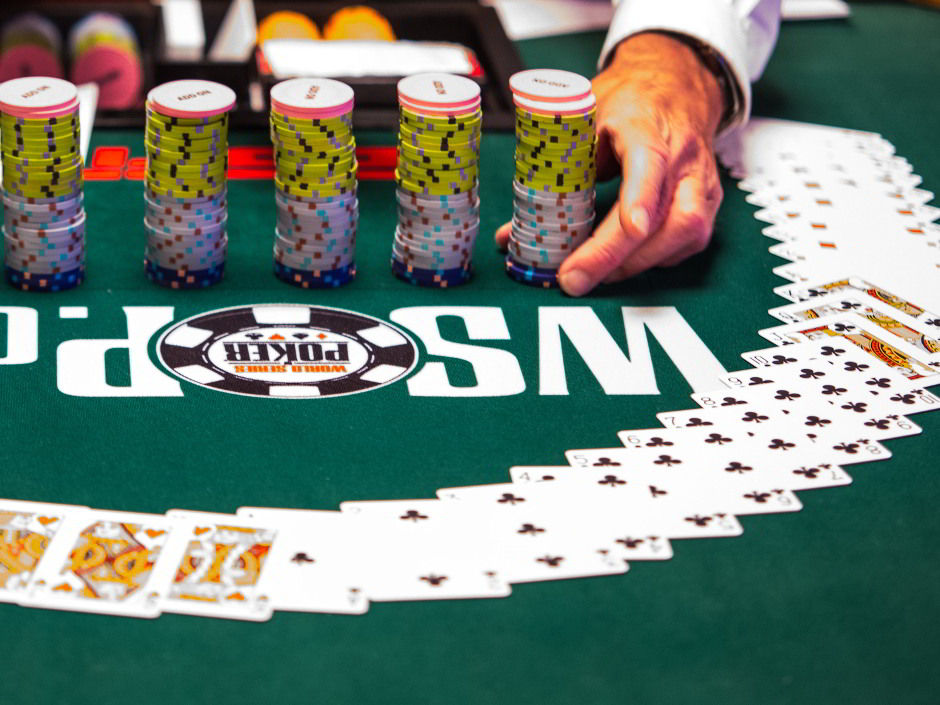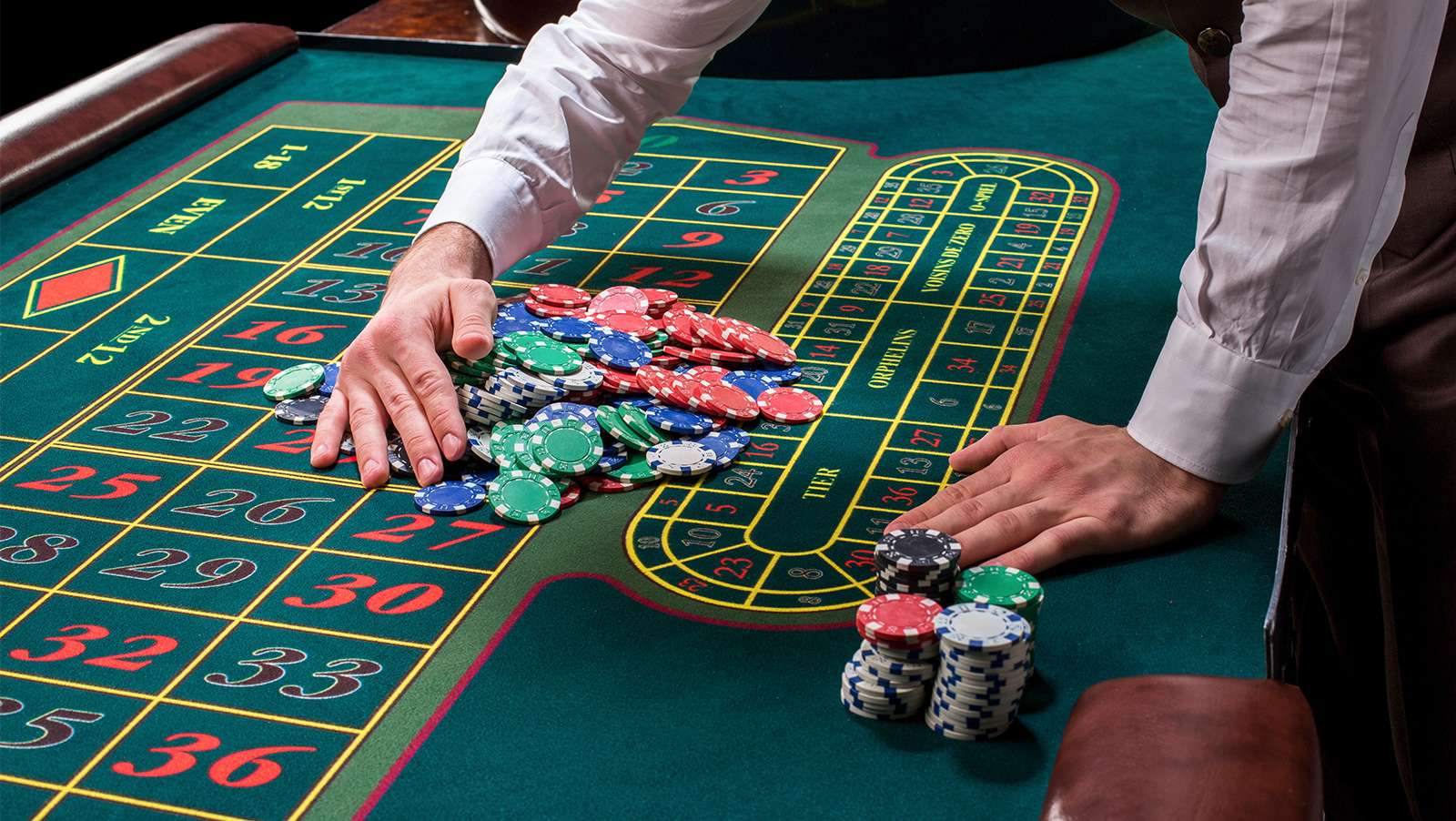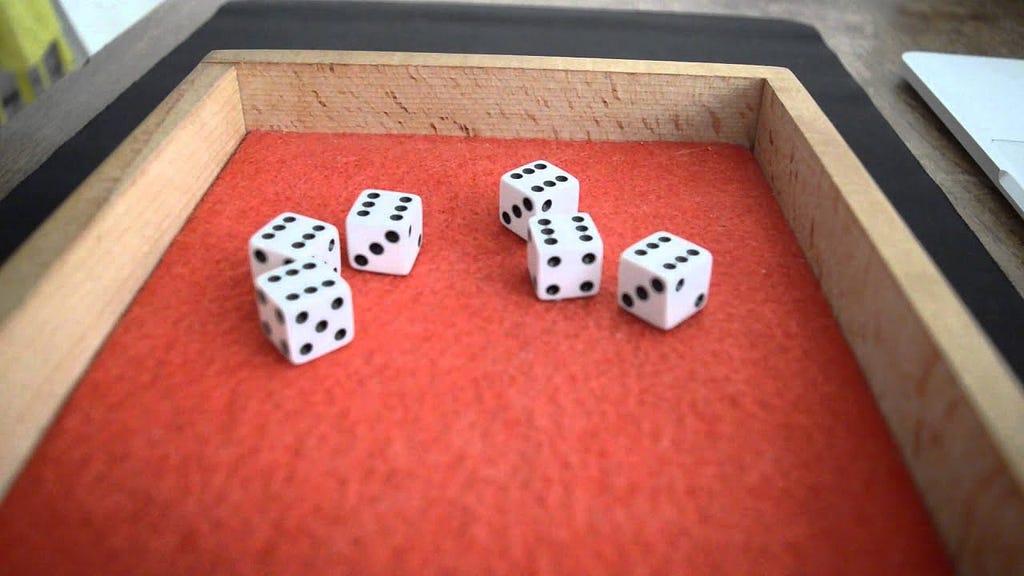Introduction
What Is Fold Equity In Poker: In the world of poker game, understanding the concept of fold equity can significantly enhance your gameplay and strategic decision-making. Fold equity refers to the probability that your opponents will fold their hands in response to your bets or raises, allowing you to win the pot without having to show your cards. It is a crucial concept that can help you capitalize on the psychological aspect of the game and maximize your profits.
By leveraging fold equity, you can manipulate the actions of your opponents and influence their decisions. The more fold equity you possess, the more effective your bluffs and semi-bluffs become. Calculating and utilizing fold equity requires a combination of situational awareness, observation skills, and understanding your opponents’ tendencies.
In this article, we will delve into the intricacies of fold equity in poker. We will explore the factors that contribute to fold equity, such as stack sizes, table dynamics, player profiles, and the strength of your hand. Additionally, we will discuss various strategies to increase your fold equity and make informed decisions based on this concept. Whether you’re a beginner or an experienced player, understanding fold equity will give you an edge at the poker table.
What is fold equity in poker?
Fold equity is a concept in poker strategy that is especially important when a player becomes short-stacked in a no limit (or possibly pot limit) tournament. It is the equity a player can expect to gain due to the opponent folding to his or her bets.
Fold equity in poker refers to the probability or likelihood that your opponents will fold their hands in response to your bets or raises. It is a concept that revolves around the psychological aspect of the game and the strategic manipulation of your opponents’ decisions. When you have a high fold equity, it means that your opponents are more likely to relinquish their hands, allowing you to win the pot without having to show your cards.
Fold equity is influenced by various factors, such as the strength of your hand, your table image, the size of your bets or raises, the stack sizes of you and your opponents, and the overall dynamics of the game. Skilled players utilize fold equity as a tool to maximize their profits by bluffing effectively, making well-timed semi-bluffs, and inducing their opponents to make incorrect decisions.
Understanding and utilizing fold equity can greatly enhance your poker strategy. It requires a combination of observation skills, situational awareness, and the ability to read your opponents’ tendencies. By incorporating fold equity into your gameplay, you can increase your chances of winning pots and becoming a more successful poker player.

Should I call or fold poker?
A good rule of thumb is: if it’s not good enough for a raise it’s not good enough for a call. So if you have the best hand, you should raise for value. If not, fold (unless the odds look good for improving to a better hand).
The decision to call or fold in poker depends on various factors that need to be carefully considered. Here are some points to ponder when facing this decision:
1. Hand Strength: Evaluate the strength of your hand and its potential to improve. If you have a strong hand, such as a high pair or a strong draw, it may be worth calling. However, if your hand is weak and unlikely to improve, folding might be the prudent choice.
2. Pot Odds: Assess the pot odds, which compare the size of the bet you need to call with the potential payout. If the pot odds are favorable and offer a good return on investment, calling may be justified. Otherwise, folding may be the better decision.
3. Player Reads: Consider your observations of your opponents’ playing styles and tendencies. If you have information suggesting that your opponents are likely to fold to aggression or bluff frequently, making a well-timed bluff might be a viable option. Otherwise, folding may be safer.
4. Stack Sizes and Position: Take into account your stack size and position at the table. If you have a short stack or are in an early position with marginal hands, folding might be a wise move to conserve chips. However, if you have a deep stack or are in a favorable position, calling may be more justifiable.
Ultimately, the decision to call or fold in poker depends on a combination of factors, including hand strength, pot odds, player reads, and table dynamics. It’s essential to analyze the situation carefully and make an informed decision based on the information available to you.
Is it good to fold in poker?
This question is one of the most important things to ask yourself when deciding whether to fold. If a player is wild and playing a lot of hands, you should fold less against them. Conversely, if a player is super tight, barely entering a pot and suddenly wakes up with a big raise, you should almost certainly fold.
Folding in poker can be a wise and strategic decision in many situations. Here are a few reasons why folding can be considered a good move:
1. Weak Hand: If you have a weak hand that is unlikely to improve or has little potential for winning, folding can prevent you from losing further chips in a losing battle. This preserves your bankroll for stronger hands.
2. Pot Odds: When the pot odds are not favorable, folding is often the correct choice. If the cost of calling a bet outweighs the potential payout, folding saves you from making a losing investment.
3. Uncertain Situations: In certain circumstances where you lack information about your opponents’ hands or the board texture is unfavorable, folding can protect you from making costly mistakes. It allows you to avoid risky confrontations and minimize losses.
4. Avoiding Bluffs: If you suspect that an opponent is bluffing with a strong bet or raise, folding can save you from falling into their trap and losing more chips.
Overall, folding is an essential tool in a poker player’s arsenal. It allows you to exercise discipline, preserve your chips, and make calculated decisions that maximize your chances of long-term success at the poker table.
How do you calculate fold equity in poker?
Fold equity can be expressed by a straightforward equation: Fold equity = (chance our opponent will fold) (opponent’s equity in the hand). The % chance that your opponent will fold is based on your knowledge of your opponent.
Calculating fold equity in poker involves assessing the likelihood that your opponents will fold their hands based on your bets or raises. While fold equity is more subjective than precise, you can make an estimation by considering the following factors:
1. Table Dynamics: Evaluate the current state of the table, including the playing styles of your opponents, their tendencies, and how they react to aggression. Players who are more likely to fold in the face of aggression contribute to higher fold equity.
2. Stack Sizes: Take into account your stack size and those of your opponents. Generally, the shorter the stack, the higher the fold equity, as players with smaller stacks are more cautious about risking their remaining chips.
3. Bet Sizing: The size of your bets or raises influences fold equity. Larger bets tend to generate higher fold equity, putting more pressure on opponents to make a difficult decision.
4. Player Image: Your table image, whether perceived as tight or aggressive, affects fold equity. If you have been playing tight and suddenly become more aggressive, opponents may be more inclined to fold.
While these factors can guide your assessment of fold equity, it is important to remember that it is not an exact science. Experience, observation, and adapting to specific situations will help refine your understanding and ability to estimate fold equity accurately.
What happens if you keep folding in poker?
To fold is to discard one’s hand and forfeit interest in the current pot. No further bets are required by the folding player, but the player cannot win. Folding may be indicated verbally or by discarding one’s hand face down into the pile of other discards called the muck, or into the pot (uncommon).
If you consistently fold in poker without taking part in many hands, a few consequences may arise:
1. Loss of Blinds: By folding consistently, you forfeit the opportunity to win pots and collect blinds and antes. Over time, this can negatively impact your chip stack, especially in cash games where the blinds steadily increase.
2. Tight Image: Frequent folding can lead other players to perceive you as a tight player who only enters pots with strong hands. This image can limit your ability to successfully bluff or extract value from your premium holdings, as opponents may be more inclined to fold against your bets and raises.
3. Reduced Action: By folding consistently, you limit your involvement in the game, potentially reducing the excitement and enjoyment of playing poker. This can result in missed opportunities to capitalize on favorable situations and engage in strategic battles.
4. Missed Learning Opportunities: Folding too often can limit your exposure to different poker scenarios and the opportunity to develop your skills. Participating in hands allows you to learn more about your opponents, gain experience in post-flop play, and refine your decision-making abilities.
While folding is a crucial aspect of poker strategy, excessive folding can hinder your ability to accumulate chips, exploit opportunities, and fully participate in the game. It is essential to find a balanced approach that combines selective folding with strategic aggression to maximize your success at the table.

What is fold equity, and how does it impact poker strategy?
Fold equity in poker refers to the potential advantage a player gains by betting or raising with a hand that may not be the strongest but has the potential to make opponents fold their hands. It is the likelihood of winning the pot without a showdown.
Fold equity impacts poker strategy by allowing players to win pots even when they don’t have the best hand. It adds an extra layer of complexity to the game and provides opportunities for strategic maneuvering.
Here are a few ways fold equity impacts poker strategy:
1. Bluffing: Fold equity enables players to bluff effectively by putting pressure on opponents and inducing them to fold better hands. Skilled players can exploit their opponents’ tendencies and table dynamics to make well-timed bluffs, increasing their chances of success.
2. Semi-Bluffing: With fold equity, players can make aggressive bets or raises with draws or speculative hands that have a chance to improve. If opponents fold, the player wins the pot. If they call, there’s still a chance to win with the improving hand.
3. Value Betting: Fold equity also plays a role in value betting. When holding a strong hand, players can make bets or raises to extract value from opponents. If opponents fold, the player wins the pot. If they call, the player has a strong hand and stands a good chance of winning at showdown.
4. Table Image: Utilizing fold equity can help shape a player’s table image. By selectively using bluffs or semi-bluffs, players can create an image of being aggressive and unpredictable, which may induce opponents to make mistakes or fold more often.
Incorporating fold equity into poker strategy requires a good understanding of opponents, hand strength, position, and the dynamics of the game. Skilled players use fold equity as a tool to maximize their profits and gain an edge over their opponents.
How does stack size affect fold equity in poker?
Stack size has a significant impact on fold equity in poker. Here’s how stack size influences fold equity:
1. Larger Stack Size: When a player has a larger stack compared to their opponents, it increases their fold equity. The threat of losing a significant portion of their stack or being forced to play for all their chips can make opponents more cautious and inclined to fold their hands.
2. Shorter Stack Size: Conversely, when a player has a shorter stack, their fold equity decreases. Short-stacked players are perceived as having less room to maneuver and are more likely to be called or challenged, reducing the effectiveness of their fold equity.
3. All-In Situations: When a player is all-in, their fold equity is at its maximum. All-in bets put opponents to a decision for their entire stack, making them more likely to fold unless they have a strong hand.
4. Adjusting Bet Sizes: Players with larger stacks can make larger bets or raises to increase their fold equity. This puts pressure on opponents by forcing them to risk a significant portion of their stack or fold.
It’s essential for players to be aware of stack sizes and adjust their strategies accordingly. Stack size can influence opponents’ decisions and create opportunities for strategic maneuvers based on fold equity considerations.
How can understanding fold equity help players make better decisions at the poker table?
Understanding fold equity can help players make better decisions at the poker table by providing them with a valuable tool to assess risk and maximize profitability. Here are a few ways understanding fold equity can enhance decision-making:
1. Bluffing Opportunities: Recognizing situations where fold equity is high allows players to identify prime opportunities for well-timed bluffs. By understanding the likelihood of opponents folding to aggression, players can exploit their tendencies and bluff more effectively.
2. Value Betting: Understanding fold equity helps players determine when to make value bets. If the likelihood of opponents folding to a bet is low, it may be more beneficial to check or make a smaller bet. Conversely, if fold equity is high, players can confidently make larger value bets to extract maximum value from their strong hands.
3. Risk Assessment: Fold equity provides players with a framework for evaluating risk. By assessing the potential for opponents to fold, players can make more informed decisions about whether to continue with a hand, fold, or increase their aggression.
4. Table Image Management: Recognizing fold equity allows players to shape their table image. By selectively utilizing bluffs and semi-bluffs, players can establish a loose or aggressive image, which can influence opponents’ decisions and lead to better opportunities for value betting or stealing pots.
By understanding fold equity, players gain a deeper understanding of the dynamics of each hand and can make more calculated decisions. It allows them to adapt their strategies, exploit opponents’ tendencies, and maximize their profitability at the poker table.

Conclusion
Fold equity is a powerful concept in poker that can greatly impact your success at the table. By understanding and utilizing fold equity effectively, you can gain an advantage over your opponents and increase your overall profitability. The ability to make strategic bets and raises that induce your opponents to fold their hands is a valuable skill that separates skilled players from the rest.
Throughout this article, we have explored the intricacies of fold equity in poker. We have discussed the factors that influence fold equity, such as stack sizes, table dynamics, player tendencies, and hand strength. We have also examined various strategies to enhance your fold equity, including well-timed bluffs, semi-bluffs, and exploiting your opponents’ weaknesses.
Remember, fold equity is not a guaranteed strategy, and it should be used in conjunction with other poker skills and concepts. The key to successfully applying fold equity lies in understanding the specific dynamics of each hand, adapting to different opponents, and making well-informed decisions based on the available information.
By incorporating fold equity into your poker arsenal, you can become a more versatile and formidable player. Continuously develop your understanding of fold equity and practice its application in real-game scenarios to refine your skills and improve your chances of success at the poker table.










































